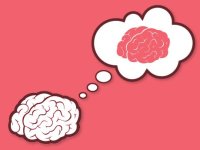Metacognition: The Gift That Keeps Giving
By teaching students to “drive their own brain” through metacognition, we provide a concrete way to guide them think about how they can best learn.
Students who succeed academically often rely on being able to think effectively and independently in order to take charge of their learning. These students have mastered fundamental but crucial skills such as keeping their workspace organized, completing tasks on schedule, making a plan for learning, monitoring their learning path, and recognizing when it might be useful to change course. They do not need to rely on their teacher as much as others who depend on more guidance to initiate learning tasks and monitor their progress. Students who do not learn how to "manage" themselves well as they proceed through school experience more setbacks, become discouraged and disengaged from learning, and tend to have lower academic performance. They may also be responsible for more classroom management issues.
Many teachers we know enjoy teaching students how to wield one of the most powerful thinking tools: metacognition, or the ability to think about your thoughts with the aim of improving learning. A metaphor that resonates with many students is that learning cognitive and metacognitive strategies offers them tools to "drive their brains." The good news for teachers and their students is that metacognition can be learned when it is explicitly taught and practiced across content and social contexts.
A student who is excited about being in the driver's seat and steering toward learning success may well be destined to become an independent thinker on the way to charting a responsible course for school, career, and life. Being metacognitive can be likened to being more conscious, reflective, and aware of one's progress along the learning path. Teachers have told us how they feel an extraordinary sense of pleasure teaching their students useful strategies that can be applied to all aspects of their lives in and outside of school.
Metacognition in the Brain
Although educational research on the power of metacognition for increasing student learning and achievement has been amassing for several decades, scientists have only recently begun to pinpoint the physical center of metacognition in the brain. Researchers at the University College London have discovered that subjects with better metacognition had more gray matter in the anterior (front) prefrontal cortex. Studies are ongoing to determine just how this brain area contributes to the critically important skill of metacognition.
Teachers who want to introduce metacognition in their classrooms might begin by reading our post Engaging Brains: How to Enhance Learning by Teaching Kids About Neuroplasticity, and also teach students about the anterior prefrontal cortex, the brain area that researchers have begun to link with metacognition.
How to Teach Students to Be More Metacognitive
- Explicitly teach students about this essential learning skill by defining the term metacognition. Especially with younger students, we recommend a metaphor -- such as driving their brains -- as a concrete way to guide them toward thinking about how they can best learn. This metaphor taps into students' desires to master important skills for driving their destiny.
- Ask students to describe the benefits and supply examples of driving their brains well. For example, sometimes we might need to put on the brakes (e.g., by reviewing a reading passage to make sure that we understand it) or step on the gas (e.g., by jotting down and organizing notes for an essay instead of getting stuck on how to start it). We need to keep our brains moving in the correct lane and along best route toward achieving our goals.
- Whenever possible, let students choose what they want to read and topics they want to learn more about. When they are genuinely interested and motivated to learn about a topic of study, students are apt to sustain interest in thinking about a project over the long haul.
- Look for opportunities to discuss and apply metacognition across core subjects and in a variety of lessons so that students can transfer it for the most benefit. When Donna has taught this topic, she's often asked students to give examples across academics, in interactions with friends and family, and (for older students) on the job. If she's with young children, she asks them how their parents might use this strategy in their work.
- Model metacognition by talking through problems. We've found that students learn a lot from listening as their teachers use higher-order thinking strategies aloud. They often laugh when their teachers make "mistakes," and they learn when their teachers stop, recognize the miscue, and step through the process of correcting. This "teachable moment" underscores that everyone makes mistakes, and that mistakes are best seen as opportunities to learn and improve.
How do you ensure that students can choose topics of study that interest them? And what are some of your favorite ways to help students become independent learners? Please tell us about them in the comments section below.
Reference
Stephen M. Fleming. "The Power of Reflection: Insight into Our Own Thoughts, or Metacognition, Is Key to Higher Achievement in All Domains." Scientific American, September/October 2014, pp. 31–37.
For Further Reading
For more information on teaching metacognition, check out our article, "The Boss of My Brain: Explicit Instruction in Metacognition Puts Students in Charge of Their Learning" in ASCD's October issue of Educational Leadership. Find another free resource on this topic at For the Love of Teaching. Here, one of our brain-based teaching graduates, classroom teacher Diane Dahl, blogs about how she introduces metacognition to her second graders.
See also Chapter 6 of Five Big Ideas for Effective Teaching: Connecting Mind, Brain, and Education Research to Classroom Practice. For a discussion on cultivating self-regulation in young children, check out Flourishing in the First Five Years: Connecting Implications from Mind, Brain, and Education Research to the Development of Young Children.
